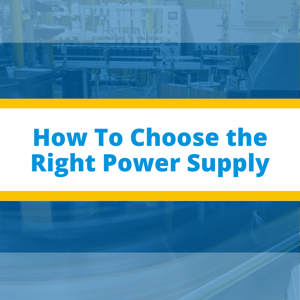 Some people are increasingly under the impression that their cars are consuming more fuel than the manufacturer’s data initially specified. Is this a deliberate issue or is it because laboratory conditions are different from real-world scenarios? One thing is certain: the problem extends to all branches of manufacturing, whether it's automotive, power electronics or other consumer products.
Some people are increasingly under the impression that their cars are consuming more fuel than the manufacturer’s data initially specified. Is this a deliberate issue or is it because laboratory conditions are different from real-world scenarios? One thing is certain: the problem extends to all branches of manufacturing, whether it's automotive, power electronics or other consumer products.
When choosing the right power supply, the first step should be to define the requirements in a clear and concise manner. The following statements can help form a structured guideline that can then be followed:
- Need for division of potential
- Input and output voltage ranges
- Requirements at output current
- Space constraints
- End product description
- Need for following regulations
- Environmental conditions for the device’ operation
- Reliability requirement of the whole circuit
Once these basic objectives have been noted, more pressing concerns can be discussed such as issues with measurement, ripples, noise and inrush current.
Measurement Errors
Every measurement changes the actual state of the circuit. This means that when a 4-wire measurement is carried out, the leads’ internal resistance will have impact over the values. This can be ignored for a small-scale system; however, the error adds up in a system such as an operating theater where there are 30 meters of wire and strict current sensitivity is necessary.
This means that both load and source requirements need to be known beforehand, and from thereon the medium (electrical cables) have to be chosen carefully.
Ripple and Noise
Switched mode converters have revolutionized electrical engineering and have paved the way for the development of DC-grids and power supplies. However, they have also brought a major hurdle with them: the onset of ripples. The presence of solid-state switches within converters give way to ripples and noise that can affect the end-product’s performance. Therefore, it is vital that a converter be chosen that falls within the tolerance range of the product. If necessary, ripples must be reduced. The installation of a parallel capacitor can help reduce voltage ripples, while series inductors can limit current fluctuations.
Inrush Current
During the transient state of a converter's operation, a huge amount of current flows in to the circuit before nominal ratings are approached; this is called inrush current. Ambient temperatures can have a significant impact on the inrush current, therefore, the application should be carefully monitored before it is switched on. Usually, devices such as LED lamps, etc. are designed to withstand inrush current, however, this may be disastrous for sensitive equipment. For larger applications, such as in the industry Variable Frequency Drives are used, while for simpler applications soft-starters or the heat-emitting negative thermistor coefficient resistor can be used.
Interested in learning more? Visit our website www.premierautomation.com, or talk to one of our specialists today.



-1.png?width=728&name=our%20solutions%20(1)-1.png)
